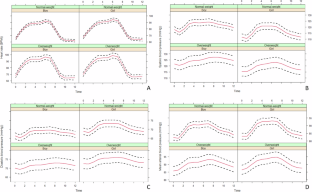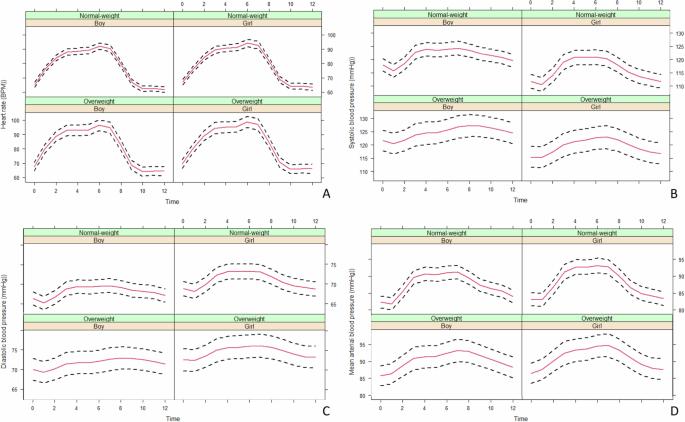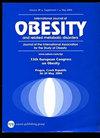The cardiovascular exercise response in children with overweight or obesity measured by cardiovascular magnetic resonance imaging
IF 4.2
2区 医学
Q1 ENDOCRINOLOGY & METABOLISM
引用次数: 0
Abstract
Overweight and obesity are among the main causes of cardiovascular diseases. Exercise testing can aid in the early detection of subtle cardiac dysfunction not present in rest. We hypothesized that the cardiovascular response to exercise is impaired among children with overweight or obesity, characterized by the inability of the cardiovascular system to adapt to exercise by increasing cardiac volumes and blood pressure. We performed a cardiovascular stress test to investigate whether the cardiovascular exercise response is altered in children with overweight and obesity, as compared to children with a normal weight. A subgroup of the Generation R population-based prospective cohort study, consisting of 41 children with overweight or obesity and 166 children with a normal weight with a mean age of 16 years, performed an isometric exercise. Continuous heart rate and blood pressure were measured during rest, exercise and recovery. Cardiovascular magnetic resonance (CMR) measurements were performed during rest and exercise. Higher BMI was associated with a higher resting systolic and diastolic blood pressure (difference: 0.24 SDS (95% CI 0.10, 0.37) and 0.20 SDS (95% CI 0.06, 0.33)) and lower systolic and diastolic blood pressure increases from rest to peak exercise (−0.11 SDS (95% CI −0.20, −0.03) and −0.07 SDS (95% CI −0.07, −0.01)). BMI was also associated with a slower decrease in systolic and diastolic blood pressure during recovery (p values < 0.05). Higher childhood BMI was associated with lower BSA corrected left ventricular mass, end-diastolic volume and stroke volume (p values < 0.05). There were no associations of childhood BMI with the cardiac response to exercise measured by heart rate and CMR measurements. Childhood BMI is, across the full range, associated with a blunted blood pressure response to static exercise but there were no differences in cardiac response to exercise. Our findings suggest that adiposity may especially affect the vascular exercise reaction without affecting cardiac response.


通过心血管磁共振成像测量超重或肥胖儿童的心血管运动反应。
背景:超重和肥胖是导致心血管疾病的主要原因之一。运动测试有助于及早发现静息状态下不明显的心脏功能障碍。我们假设,超重或肥胖儿童的心血管对运动的反应受损,其特点是心血管系统无法通过增加心容量和血压来适应运动。我们进行了心血管压力测试,以研究与体重正常的儿童相比,超重和肥胖儿童的心血管运动反应是否会发生改变:R一代人群前瞻性队列研究的一个子组,包括41名超重或肥胖儿童和166名体重正常儿童,平均年龄为16岁:方法:在休息、运动和恢复过程中连续测量心率和血压。方法:在休息、运动和恢复过程中连续测量心率和血压,在休息和运动过程中进行心血管磁共振(CMR)测量:结果:较高的体重指数与较高的静息收缩压和舒张压相关(差异为 0.24 SDS(95%)):0.24 SDS (95% CI 0.10, 0.37) 和 0.20 SDS (95% CI 0.06, 0.33)),而从静息到运动高峰时收缩压和舒张压的升高幅度较低(-0.11 SDS (95% CI -0.20, -0.03) 和-0.07 SDS (95% CI -0.07, -0.01))。体重指数还与恢复期收缩压和舒张压下降速度减慢有关(P 值 结论):在所有范围内,儿童的体重指数都与静态运动时血压反应减弱有关,但心脏对运动的反应没有差异。我们的研究结果表明,肥胖可能会特别影响血管运动反应,而不会影响心脏反应。
本文章由计算机程序翻译,如有差异,请以英文原文为准。
求助全文
约1分钟内获得全文
求助全文
来源期刊

International Journal of Obesity
医学-内分泌学与代谢
CiteScore
10.00
自引率
2.00%
发文量
221
审稿时长
3 months
期刊介绍:
The International Journal of Obesity is a multi-disciplinary forum for research describing basic, clinical and applied studies in biochemistry, physiology, genetics and nutrition, molecular, metabolic, psychological and epidemiological aspects of obesity and related disorders.
We publish a range of content types including original research articles, technical reports, reviews, correspondence and brief communications that elaborate on significant advances in the field and cover topical issues.
 求助内容:
求助内容: 应助结果提醒方式:
应助结果提醒方式:


